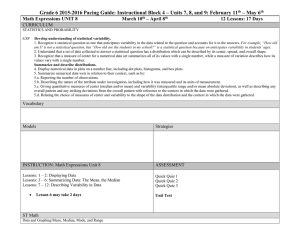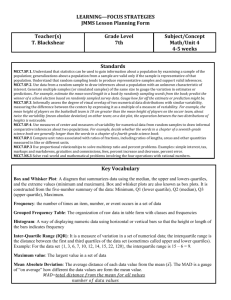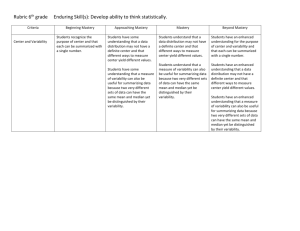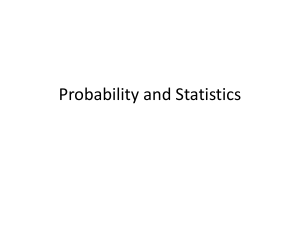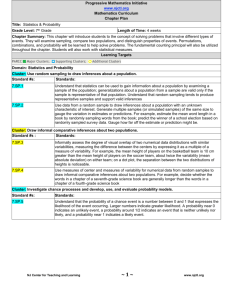Statistical Variability Chapter Plan | 20.5KB
advertisement
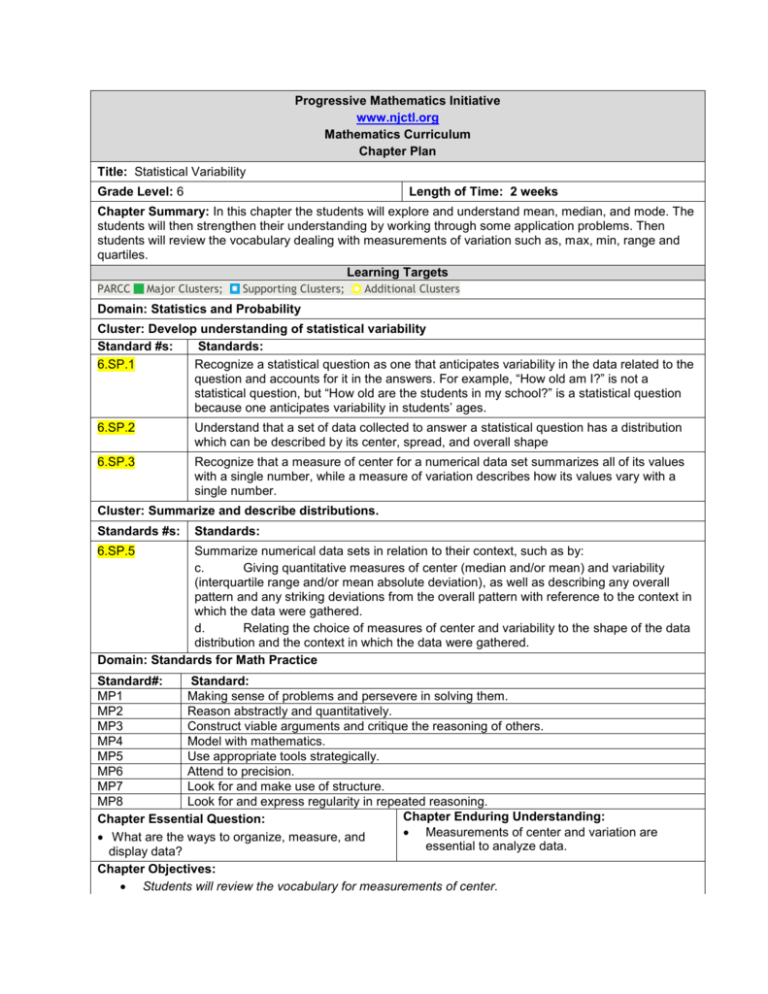
Progressive Mathematics Initiative www.njctl.org Mathematics Curriculum Chapter Plan Title: Statistical Variability Grade Level: 6 Length of Time: 2 weeks Chapter Summary: In this chapter the students will explore and understand mean, median, and mode. The students will then strengthen their understanding by working through some application problems. Then students will review the vocabulary dealing with measurements of variation such as, max, min, range and quartiles. Learning Targets PARCC Major Clusters; Supporting Clusters; Additional Clusters Domain: Statistics and Probability Cluster: Develop understanding of statistical variability Standard #s: Standards: 6.SP.1 Recognize a statistical question as one that anticipates variability in the data related to the question and accounts for it in the answers. For example, “How old am I?” is not a statistical question, but “How old are the students in my school?” is a statistical question because one anticipates variability in students’ ages. 6.SP.2 Understand that a set of data collected to answer a statistical question has a distribution which can be described by its center, spread, and overall shape 6.SP.3 Recognize that a measure of center for a numerical data set summarizes all of its values with a single number, while a measure of variation describes how its values vary with a single number. Cluster: Summarize and describe distributions. Standards #s: Standards: 6.SP.5 Summarize numerical data sets in relation to their context, such as by: c. Giving quantitative measures of center (median and/or mean) and variability (interquartile range and/or mean absolute deviation), as well as describing any overall pattern and any striking deviations from the overall pattern with reference to the context in which the data were gathered. d. Relating the choice of measures of center and variability to the shape of the data distribution and the context in which the data were gathered. Domain: Standards for Math Practice Standard#: Standard: MP1 Making sense of problems and persevere in solving them. MP2 Reason abstractly and quantitatively. MP3 Construct viable arguments and critique the reasoning of others. MP4 Model with mathematics. MP5 Use appropriate tools strategically. MP6 Attend to precision. MP7 Look for and make use of structure. MP8 Look for and express regularity in repeated reasoning. Chapter Enduring Understanding: Chapter Essential Question: Measurements of center and variation are What are the ways to organize, measure, and essential to analyze data. display data? Chapter Objectives: Students will review the vocabulary for measurements of center. Students will practice and strengthen their understanding of measurements of center by working through application problems Students will review vocabulary for measurements of variation such as min/max, range, quartiles, Outliers, and mean absolute deviation. Evidence of Learning Formative Assessments: SMART Response questions used throughout the chapter. 3 Quizzes Summative Assessment: Chapter Test Lesson Plan Topics Timeframe Chapter Intro: What is Statistics? 0.5 day Topic #1: Measures of Center (Mean, Median, 2.5 days Mode) Quiz #1 Topic #2: Central Tendency Application Problems 2 day Quiz #2 Topic #3: Measures of Variation (Min-Max, Range, 4 days Quartiles, Outliers, Mean Absolute Deviation) Lab: RAFT – Medi, Meany, Midi, Mode Lab: RAFT – Who is the Outlier Quiz #3 Review and Chapter Test 2 days Curriculum Development Resources: https://njctl.org/courses/math/6th-grade-math/ http://www.raftbayarea.org/ideas/Medi%20Meany%20Midi%20Mode.pdf http://www.raftbayarea.org/ideas/Who%20is%20The%20Outlier.pdf Lesson Components 21st Century Skills Financial, Economic, Business, and Entrepreneurial Literacy 21st Century Themes Critical Thinking and Problem Solving Communication and Collaboration Life and Career Skills
